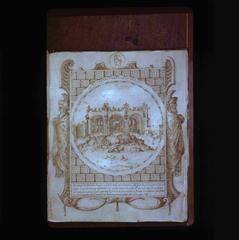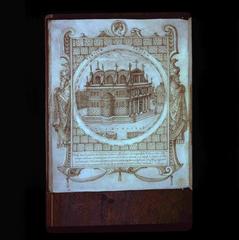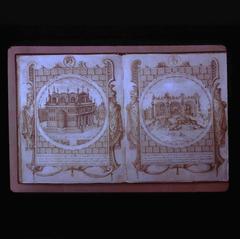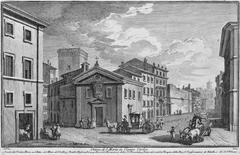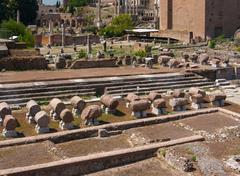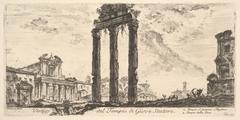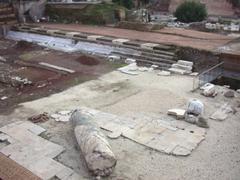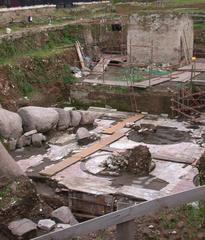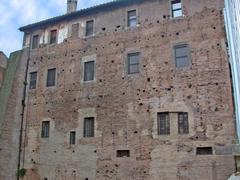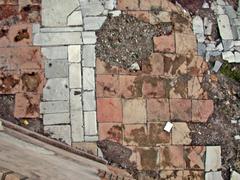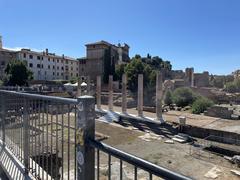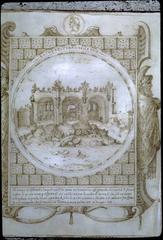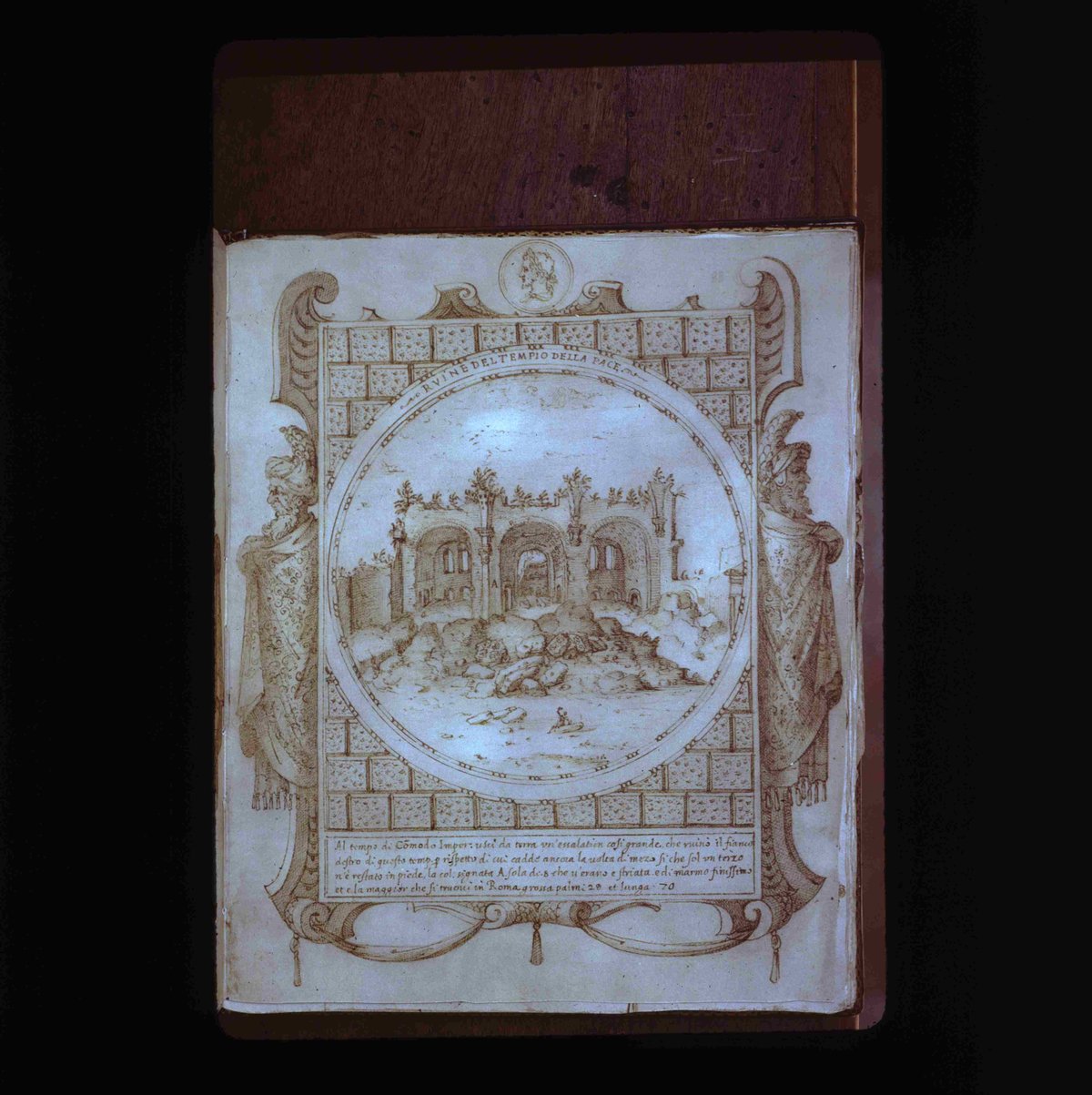
Temple of Peace Rome: Visiting Hours, Tickets, and Comprehensive Travel Guide
Date: 14/06/2025
Introduction
The Temple of Peace (Templum Pacis), also known as the Forum of Peace or Forum of Vespasian, stands as one of Rome’s most captivating historical landmarks. Built between 71 and 75 CE by Emperor Vespasian, it commemorated Rome’s victory in the First Jewish–Roman War and marked an era of restored peace and imperial prosperity. Unlike typical Roman temples, the Temple of Peace uniquely blended religious, civic, and cultural functions, featuring lush gardens, public art, and monumental war spoils—most famously, treasures from the fall of Jerusalem, including the seven-branched menorah. The temple also housed the renowned Forma Urbis Romae, a vast marble map of ancient Rome, which remains invaluable to historians and archaeologists.
Rediscovered in the late 19th and early 20th centuries beneath layers of urban development, the temple’s ruins reveal a grand rectangular precinct adorned with colonnaded porticoes and exquisite materials such as Aswan pink granite and pavonazzetto marble. Restoration and archaeological efforts continue to protect and interpret this extraordinary site, which is now integrated into the Imperial Fora archaeological park. Visitors can explore the Temple of Peace as part of combined tickets that include iconic sites like the Roman Forum, Palatine Hill, and the Colosseum.
This detailed guide covers everything you need to know: historical context, architectural highlights, visiting hours, ticketing, accessibility, travel tips, nearby attractions, and practical advice for making the most of your visit.
For additional information and official updates, see Mercati di Traiano, Madain Project, and Romewise.
Table of Contents
- Introduction
- Historical Background and Cultural Significance
- Architectural Features and Artefacts
- Archaeological Discoveries and Restoration Efforts
- Visitor Information
- Guided Tours and Audio Guides
- Visitor Facilities
- Best Times to Visit
- Nearby Attractions
- Special Events and Interactive Experiences
- Photographic Opportunities
- Frequently Asked Questions (FAQ)
- Cultural and Symbolic Legacy
- Conclusion and Call to Action
- References
Historical Background and Cultural Significance
The Temple of Peace was commissioned by Emperor Vespasian following Rome’s victory in Judea, with construction funded by treasures taken from Jerusalem. Dedicated to Pax, the Roman goddess of peace, the temple’s prominent location in the Imperial Forums—facing the Colosseum—underscored Vespasian’s message of restored prosperity after years of turmoil. The site functioned as a center of religious worship, political display, and public access to art and knowledge, reflecting Rome’s cultural and imperial ambitions. Its role as a repository for the spoils of Jerusalem, including sacred Jewish artefacts, asserted Rome’s dominance and served as a lasting symbol of peace through power (Madain Project).
Architectural Features and Artefacts
Overall Design and Structure
The Temple of Peace diverged from traditional Roman temples, combining a sacred space with public gardens and monumental art. Built on the site of the former Macellum, destroyed in the Great Fire of 64 CE, its design emphasized tranquility and celebration rather than commerce. The temple precinct measured approximately 145 by 100 meters and was surrounded by colonnaded porticoes on three sides.
Layout and Spatial Organization
- Rectangular Precinct: The complex featured a vast open area, with gardens and pools at the center, and was framed by shaded colonnades and exedras (large semicircular niches), still visible today beneath the Torre dei Conti.
- Temple Building: At the western end stood the main temple, with a hexastyle pronaos (six-columned portico), a rectangular hall, and an apse containing the statue of Pax.
- Side Halls: Four large side halls were likely used as libraries or document repositories. One was converted into the Church of Saints Cosma and Damiano in the 6th century. Another held the celebrated Forma Urbis Romae, an immense marble map of ancient Rome (Wikipedia).
- Materials and Decoration: The temple was constructed using high-quality materials such as Aswan pink granite, pavonazzetto, Numidian marble, and porphyry. Opus sectile (inlaid marble) flooring and decorative statuary adorned the precinct (Mercati di Traiano).
Artefacts and Treasures
- Spoils from Jerusalem: Included the golden menorah, Table of Shewbread, and silver trumpets, famously depicted on the Arch of Titus (Wikipedia).
- Forma Urbis Romae: Installed by Emperor Septimius Severus, this marble plan measured about 18 x 13 meters and detailed the city’s layout. Surviving fragments are crucial for reconstructing ancient Rome (Madain Project).
- Statues and Cult Images: The centerpiece was the statue of Pax, surrounded by numerous statues and trophies from conquered lands.
Archaeological Discoveries and Restoration Efforts
Rediscovered during Rome’s modernization in the late 19th and early 20th centuries, the temple’s location was confirmed by marble pavements and architectural fragments. Systematic excavations in the 1930s revealed much of the rectangular plan and surviving porticoes. Restoration has focused on stabilizing ruins, reconstructing colonnades, and integrating the site into the Imperial Fora archaeological park (Romewise).
Recent projects, supported by EU funding, have improved accessibility, cleaning of stonework, and visitor pathways. Metro construction and other urban developments have posed challenges but also led to new discoveries, such as medieval cellars and kilns.
Modern technologies—including 3D modeling and ground-penetrating radar—continue to advance research and conservation, while augmented reality (AR) and virtual reality (VR) experiences help visitors visualize the temple’s original splendor.
Visitor Information
Visiting Hours
- Standard Hours: Daily from 9:00 AM to 7:00 PM (last admission at 6:00 PM), with seasonal adjustments.
- Holiday Closures: Closed on January 1st, May 1st, and December 25th.
- Check Official Sources: Hours may change due to events or restoration. Always verify before your visit (Mercati di Traiano).
Tickets and Admission
- Admission: Included in the Roma Pass and combined tickets for the Roman Forum, Palatine Hill, and Colosseum.
- Ticket Prices: Standard adult tickets cost around €16. Discounts are available for EU citizens aged 18–25, and children under 18 enter free.
- Where to Buy: Purchase online, at site entrances, or through authorized tour operators.
Accessibility
- Wheelchair Access: The site has ramps and accessible routes, though some terrain remains uneven. Advance contact is recommended for assistance.
- Facilities: Restrooms and water fountains are available near main entrances.
Travel Tips
- Best Times: Early mornings or late afternoons offer cooler temperatures and fewer crowds.
- Dress: Wear comfortable shoes for uneven surfaces; bring sun protection in summer.
- Hydration: Carry a refillable water bottle; Rome’s public fountains provide free drinking water.
- Safety: Stay alert for pickpockets, especially in crowded areas.
Guided Tours and Audio Guides
- Guided Tours: Available in multiple languages, these tours provide deeper insight into the temple’s history, architecture, and art. Booking in advance is recommended.
- Audio Guides & Apps: Self-guided options are available, including mobile apps like Audiala, with interactive maps and detailed narratives. Special tours focusing on the Forma Urbis Romae may be offered seasonally (Mercati di Traiano).
Visitor Facilities
- Amenities: Restrooms, water fountains, and shaded areas are provided near entrances; seating is limited within the ruins.
- Shops & Cafés: Not present inside the precinct, but available nearby on Via dei Fori Imperiali and in the Monti district.
- Accessibility: Staff can assist visitors with limited mobility; accessible routes are marked at entrances.
Best Times to Visit
June offers extended daylight and warm weather, making early mornings or late afternoons ideal for visiting. Weekdays, especially during the first half of June, tend to be less crowded. Avoid peak hours (10:00 AM to 3:00 PM) for a quieter experience (voyagetips.com).
Nearby Attractions
The Temple of Peace is surrounded by Rome’s most iconic ancient sites:
- Colosseum: 5-minute walk.
- Roman Forum: Adjacent.
- Palatine Hill: Nearby.
- Basilica of Maxentius: Within the Imperial Fora.
- Capitoline Museums and Via Sacra: Short stroll away.
Combination tickets and guided tours often include these sites, providing a comprehensive exploration of ancient Rome (rome.info).
Special Events and Interactive Experiences
The Imperial Fora occasionally host archaeological exhibitions, lectures, and special events. Digital and virtual tours, including interactive views of the Forma Urbis Romae, are available online and on-site. Check official websites for current programs and AR/VR experiences.
Photographic Opportunities
The interplay of light and shadow across the ruins is especially photogenic at dawn and dusk. The temple’s proximity to the Colosseum offers iconic views. Tripods may require special permission; check site regulations in advance.
Frequently Asked Questions (FAQ)
What are the Temple of Peace visiting hours?
Open daily from 9:00 AM to 7:00 PM, with last entry at 6:00 PM. Closed on select holidays.
How much do tickets cost?
Standard adult tickets are approximately €16, with discounts for youth and free entry for children under 18.
Is the Temple of Peace accessible for people with disabilities?
Yes, ramps and accessible routes are available, but some areas remain challenging due to ancient terrain.
Are guided tours available?
Yes, in several languages; audio guides and mobile apps are also offered.
How do I get there?
The site is a short walk from the Colosseo metro station (Line B) and is well-served by bus lines along Via dei Fori Imperiali.
Cultural and Symbolic Legacy
The Temple of Peace remains a powerful symbol of Rome’s resilience and cultural evolution. It has transformed from a pagan sanctuary and imperial monument to a Christian basilica and, ultimately, to a treasured archaeological site. Its legacy—especially through the Forma Urbis Romae—continues to captivate historians and visitors, providing a tangible link to the city’s ancient identity.
Conclusion and Call to Action
Whether you are passionate about ancient history or simply curious about Rome’s rich heritage, the Temple of Peace offers a unique and immersive window into the city’s imperial past. Plan your visit by securing tickets in advance, considering guided tours or audio guides, and exploring the surrounding Imperial Fora for a complete experience.
Download the Audiala app for in-depth audio guides, interactive maps, and updates on special events. Follow us on social media for the latest visitor tips, virtual tours, and insights into Rome’s timeless wonders.
References
- Temple of Peace Rome: History, Visiting Hours, Tickets & Travel Tips, 2025, Author Unknown
- Temple of Peace Rome: Visiting Hours, Tickets & Historical Guide, 2025, Author Unknown
- Temple of Peace Rome: Visiting Hours, Tickets, and Restoration History, 2025, Author Unknown
- Temple of Peace Visiting Hours, Tickets & Tips for Exploring Rome’s Imperial Fora, 2025, Author Unknown
